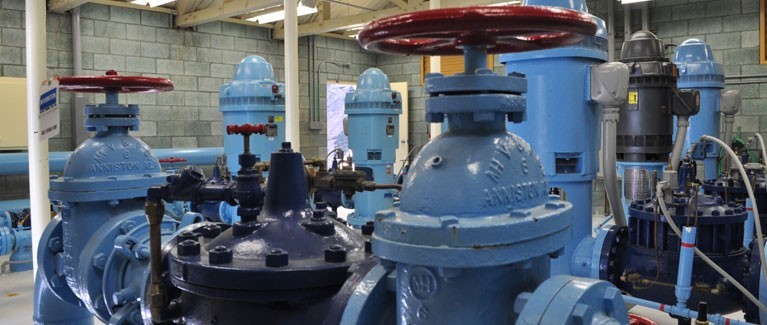About Rates & Billing

Rates
How often are bills generated and what are the payment due dates?
Water and sewer utility bills are generated monthly. Payments are due by the 15th of each month, or the following business day if this date falls on a weekend. Payments made after this date will not be reflected on your next statement.
How are water and sewer billing rates determined?
A rate study is performed anytime water and sewer rates need to be evaluated for change. Base rates are determined off of the cost of operation, maintenance, repair, and administration costs. Details of the rate study are presented to the Board of Trustees. Capital charges are collected to fund the replacement of infrastructure and assets in the District. Water tier rates are in place to encourage water conservation and cover any costs associated with having to increase the water rights held by the District. Our annual Water Management Plan is a reporting requirement to the State of Nevada and details the water consumption in the District.
Water & Sewer Rate Structure
The Public Works budget is comprised of water, sewer and general administration categories. Water is further broken down into water supply, pumping, treatment, transmission and compliance. Sewer is further broken down into effluent disposal, pumping, treatment, collection and compliance. General administration includes customer service, legal, lobbying, central services and other miscellaneous expenses. The general administration is spread evenly between sewer and water. Trash will not be a part of this discussion.
The water and sewer rates are based on the water and sewer budgets and are made up of three main components - fixed charges, variable charges, and capital improvement charges. Each major division in the water and sewer budget has a portion of fixed and variable costs and the rates are designed to fund these expenses. The fixed, variable and CIP rate components are discussed below.
2023 Rate Study Documents
Notice of Public Hearing and Proposed Schedule of Service Charges
2022 Rate Study Documents
- 2022 Rate Study - February 2022
- Comparison of Residential Rates 2019 vs 2022 Proposed Rates
- Local Monthly Combined Residential Bill Comparison
- Notice of Public Hearing and Proposed Schedule of Service Charges
November 10, 2021 Preliminary Rate Study Meeting
February 9, 2022 Rate Study Meeting
March 9, 2022 Rate Study Meeting
- Memo
- Memo Correction to Sewer Connection and CIP Fees
- Rate Study Water and Sewer Q&A
- HDR Presentation
- Livestream Recording (Item I.1 starts at 2:40 and ends at 3:48)
Fixed Charges
To provide water and sewer services, there is a portion of the costs that are fixed charges. These are sometimes called the ready to serve costs. Essentially, there is a certain level of costs that are incurred to staff, operate, and maintain our system prior to delivering any water or treating any wastewater from our customers. There is a requirement for minimum staffing to be prepared to provide service, a certain amount of supplies such as tools, training, and equipment that are needed to be ready to serve and there are electrical and gas charges to our facilities so that they can be ready to serve our demands. These fixed charges are calculated as a percentage of the budget components to determine the fixed charges of operating the water and sewer system.
Consumption Charges
To provide water and sewer services, there is a portion of the costs that are variable charges. These charges are the costs to treat and distribute water and to collect, treat, and dispose of wastewater. The variable charge for water is essentially the cost to pump it out of Lake Tahoe, treat the water, and deliver it to the customer. The variable charge for sewer is essentially what it costs to collect the wastewater and deliver it to the wastewater plant, treat the wastewater, pump, and dispose of the effluent and biosolids. This requires staff, chemicals, supplies, tools, equipment, and energy to perform these services.
Capital Improvement Charge
The capital improvement charge funds the replacement of water and sewer infrastructure. There are separate connection fees to new customers to buy into existing infrastructure. The capital charge is based on funding the costs of the five-year capital improvement plan with consideration for the multi-year capital plan.
Defensible Space Fee
The Defensible Space Fee pays for the work IVGID does on its property to manage the watershed and reduce fire fuel loads. This work also provides a protective boundary for the homes of Incline Village and Crystal Bay from the potential destruction caused by wildfires. The Fuels Management Program began in 1991 in a collaboration of the NLTFPD and IVGID. Annually approximately $450,000 to $500,000 is spent to maintain the 1,000+ acres of land IVGID owns. The defensible space fee on the Public Works statement pays for 50% of the IVGID share of costs for fuels treatment. The other 50% share of this cost is paid by the IVGID Recreation Facility Fee. The Angora Fire in South Lake Tahoe and wildfires in other mountain regions continue to remind us of the significance of this effort in our community.